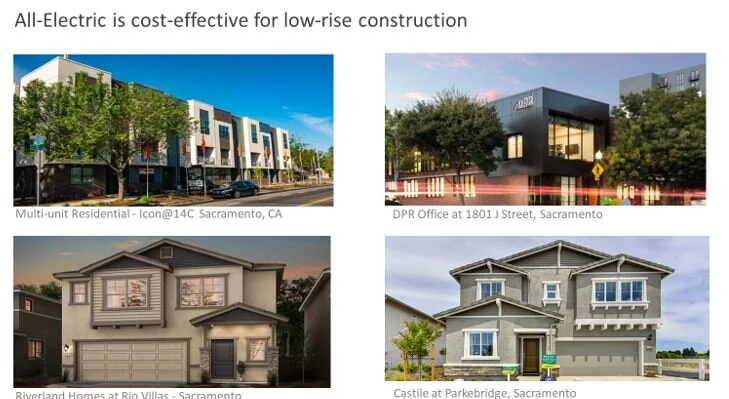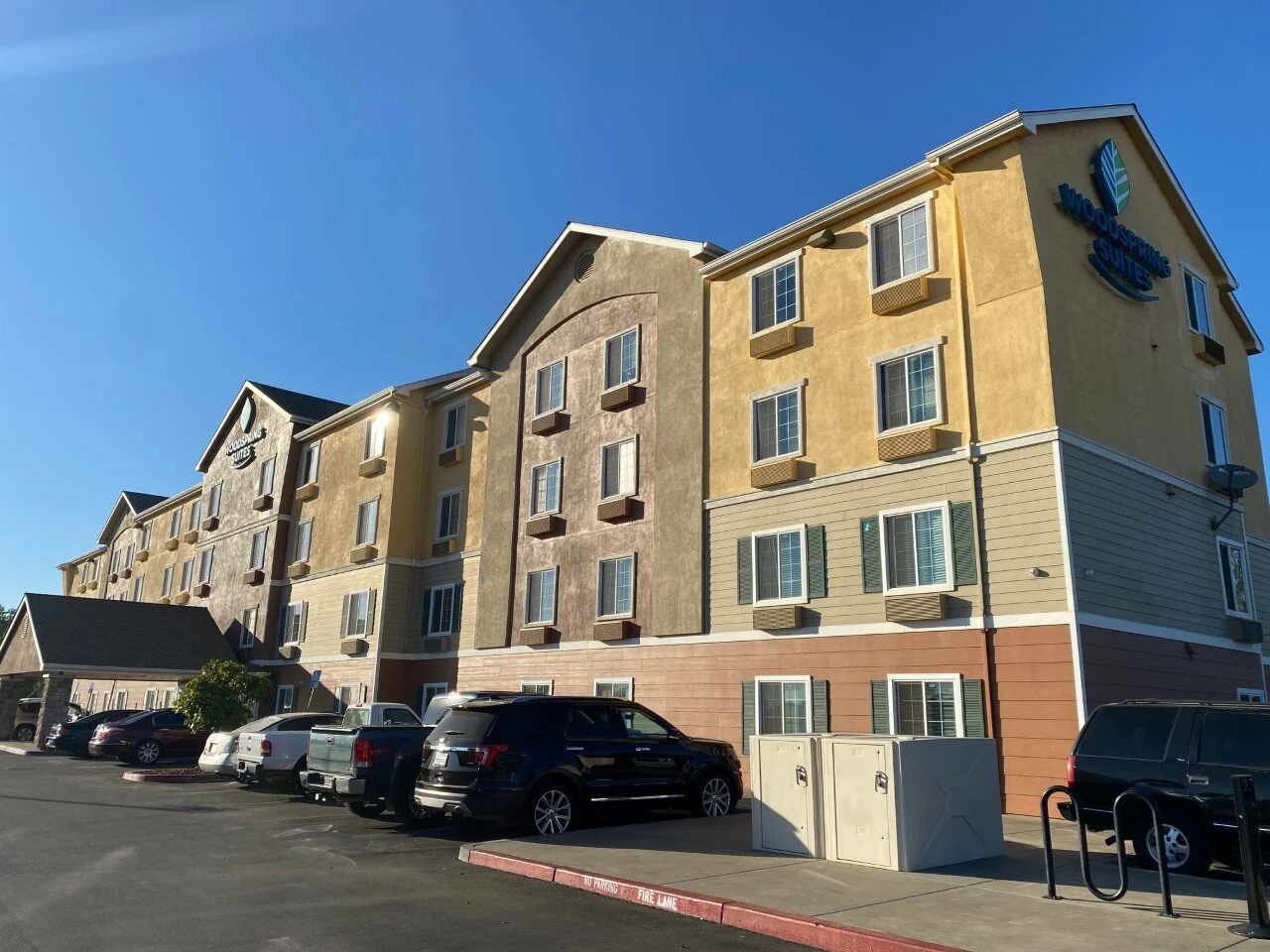New homes and low-rise buildings would go all-electric under proposed Sacramento ordinance
Some examples of all-electric buildings in Sacramento
Acting on a recommendation from the Mayors’ Commission on Climate Change, Sacramento city staff is drafting an ordinance to require all new low-rise buildings permitted after Jan. 1, 2023 to run entirely on electricity.
The ordinance would apply to all new residential and non-residential buildings of three stories or less. It would also require that these buildings include at least one electric vehicle charger and the wiring to eventually install chargers in 20 percent of parking spaces.
Jennifer Venema, the City’s Sustainability Program Manager, said she expects the ordinance to come to the City Council for approval in March. Staff presented a proposed framework and schedule to the City Law and Legislation Committee on September 29, 2020.
Taller buildings would be required to go all-electric by 2026, giving them more time to adjust to the challenges of installing electrical equipment needed to serve high-rise structures.
“As a City, we have to act with urgency to address the climate catastrophe that is becoming more obvious with each California fire season,” said Mayor Darrell Steinberg. “Electrifying buildings makes complete sense as a way to remove thousands of tons of carbon from our air while also creating healthier, more economical places for our families to live and work.”
Running buildings on electricity alone reduces the amount of carbon emitted into the atmosphere and also saves homeowners money. Because no gas lines are needed, state studies indicate that it costs $13,000 less to build a single-family home run by electricity and $60,000 less for a multi-family building with eight units, Venema said.
SMUD has already worked with about two dozen homebuilders, providing incentives for construction of all-electric smart homes in its territory. They run the gamut from the sleek urban townhomes built by Next Generation Capital at 14th and C streets to more traditional single family suburban homes in North Natomas being built by DR Horton.
To date, 291 all electric houses, 20 multi-unit dwellings and five commercial buildings have been completed. Far greater numbers are slated for construction: 1,299 single-family homes, 845 multi-family units and more than 2 million square feet of commercial space.
Electricity is also a cleaner power source than natural gas, and in California, it’s getting cleaner all the time. SB 100 requires 100 percent of electricity in the state to be produced from renewable sources by 2045. Today, 50 percent of the Sacramento Municipal Utility District’s power comes from renewable sources such as solar and wind. SMUD has committed to achieving carbon neutrality by 2040.
In contrast, natural gas emissions contribute directly to global warming and create health risks for residents exposed to fumes from gas stoves and other gas appliances. These include carbon monoxide, nitrogen oxide and particulate matter — pollutants that have been linked to asthma, cardiovascular disease and premature death.
Cutting greenhouse gases from buildings is one of the most significant ways — other than phasing out gas-powered vehicles — that society can collectively tackle climate change. Buildings consume 36 percent of energy globally and account for 39 percent of greenhouse gas emissions, according to a 2017 United Nations report.. Similarly, in Sacramento, buildings contribute approximately 38 percent of community greenhouse gas emissions.
Retrofitting older homes poses a greater challenge than building new electric homes because of the upfront costs of changing systems and swapping out gas appliances. But SMUD offers rebates of up to $13,750 for conversion, and electric appliances cost less to run over time.
“SMUD offers some of the best incentives in the country,” Venema said. “What we’re being told is that Sacramento is the best place in the nation to establish an all-electric ordinance because of SMUD’s leadership and investment.”
In August, when the Climate Commission presented its findings, the City Council also directed City staff to to work with PG&E and SMUD to determine a schedule and the needed resources to retrofit 25 percent of all existing buildings to all electric by 2030, with a particular focus on finding ways to assist low-income property owners. The City is now integrating recommendations from the Climate Commission into the Climate Action Plan update currently underway as part of the General Plan update.
Sacramento is one of a growing roster of cities pursuing electrification on a large scale. To date, 33 California jurisdictions have adopted codes that support electric construction, and eight jurisdictions require it, including San Jose and San Francisco.
The draft ordinance is anticipated to be available for public review and comment in November, with final action not taking place until March 2021. More City outreach on the ordinance is kicking off in October. Additional information on opportunities to engage will be posted as they are confirmed.
Source: Sacramento Municipal Utility District






